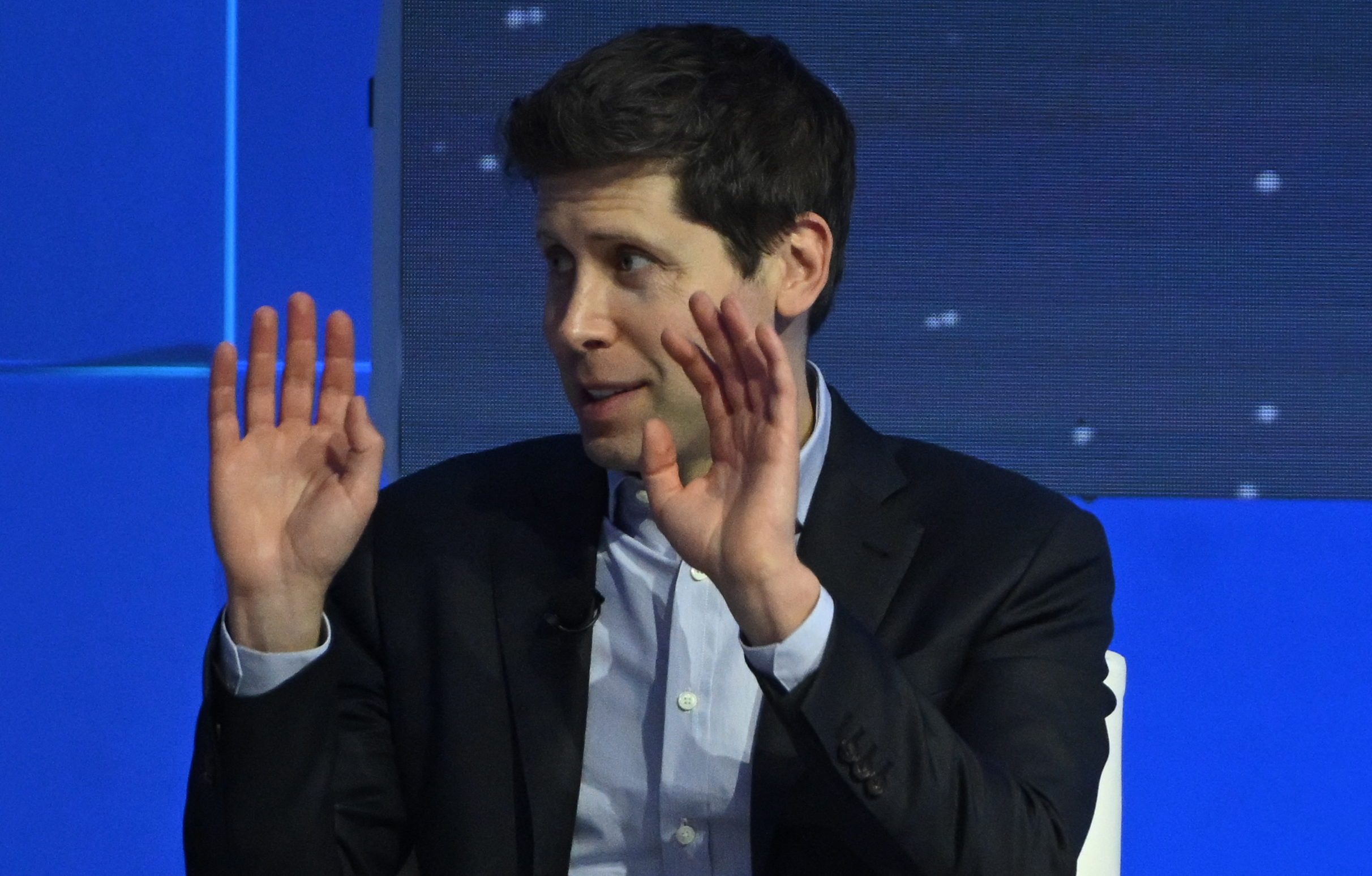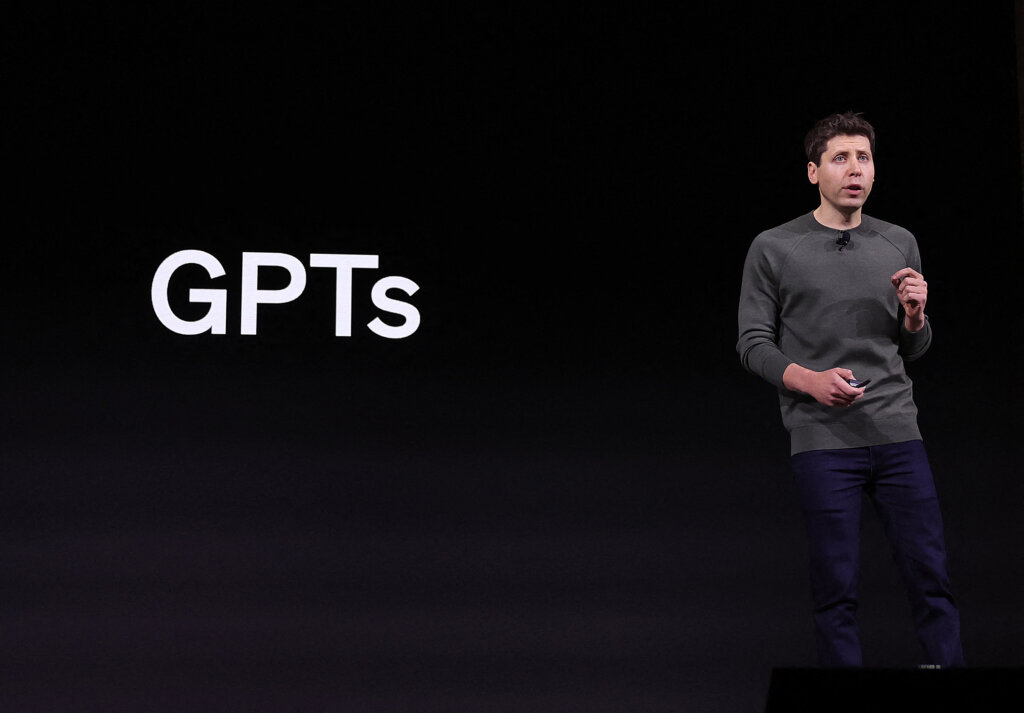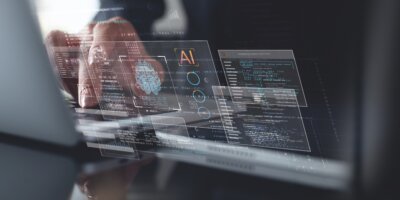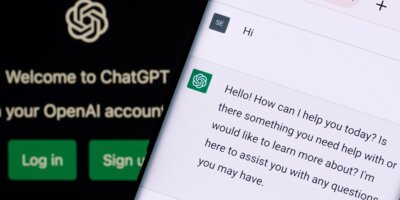
While earlier chatbots were often bothersome, ChatGPT became a sensation with its straightforward user interface natural-sounding and human-like response. (Photo by WIN MCNAMEE / GETTY IMAGES NORTH AMERICA / Getty Images via AFP).
ChatGPT: A year of revolutionizing AI dynamics
• ChatGPT crowned a turbulent first year with in-house personnel drama at OpenAI.
• While Sam Altman bounced back and forth, the impact of ChatGPT and generative AI can’t be overestimated.
• The likelihood that the world of AI looks completely different again after two years of ChatGPT is high.
November marked a significant milestone for OpenAI as it celebrated the first anniversary of its groundbreaking AI-powered chatbot, ChatGPT. This moment wasn’t just any anniversary; it symbolized a paradigm shift in chatbot technology, surpassing any previous accomplishments in the field.
However, the month also took an unexpected turn when, on November 17, 2023, the board of OpenAI suddenly ousted Sam Altman, co-founder and CEO of the company, and very much “the face” of generative AI.
The board cited concerns about Altman’s honesty in communications as the reason behind this abrupt and unforeseen decision. The tumultuous five-day period that followed captivated Silicon Valley and the world with its soap opera strangeness – including the swift resumption of normality after outcry from both fans and staff at the company.
OpenAI, the world’s leading AI company, was teetering on the brink of collapse amid an internal power struggle just days before its first anniversary.

Sam Altman, CEO of OpenAI, participates in the “Charting the Path Forward: The Future of Artificial Intelligence” at the Asia-Pacific Economic Cooperation (APEC) Leaders’ Week in San Francisco, California, on November 16, 2023. (Photo by ANDREW CABALLERO-REYNOLDS / AFP).
Initially, the reason for Altman’s firing was unclear. Later, Altman disclosed that he was dismissed for criticizing OpenAI’s direction and advocating for a greater focus on artificial general intelligence (AGI). OpenAI has aimed to develop AGI, a theoretical form of AI that can safely perform any intellectual task like a human.
“If AGI is successfully created, this technology could help us elevate humanity by increasing abundance, turbocharging the global economy, and discovering new scientific knowledge that changes the limits of possibility,” Altman said in a February 2023 blog post. He added that the development of AGI would also pose serious risks, such as misuse, accidents, and societal disruptions.
Despite these concerns, halting AGI development is neither possible nor desirable, Altman emphasized, adding that it has not been OpenAI’s plan. For context, there is a school of thought within OpenAI that it’s better to get new research out into the real world in the form of products (like ChatGPT), to understand their benefits and risks.
Altman was enthusiastic about building on ChatGPT’s success, launching new products to ride the wave of the chatbot phenomenon’s momentum. He later revealed that he was fired because he had been critical of OpenAI’s direction and pushed the company to focus more on developing AGI.
In the same February 2023 blog post, Altman emphasized that to prepare for AGI, OpenAI would need to deploy increasingly powerful systems to gain real-world experience gradually. ‘A gradual transition to a world with AGI is better than a sudden one. We expect powerful AI to make the rate of progress in the world much faster, and we think it’s better to adjust to this incrementally,” Altman noted.
Altman’s firing raised concerns about the direction of OpenAI’s travel and the role of its board in shaping the company’s future. But the five-day chaos finally resulted in Altman getting his job back after three CEO changes and a full-court press by Microsoft.
BREAKING: Elon Musk has just stated at the DealBook summit that artificial general intelligence (AGI) is only about three years away.
He also stated that he thinks that Open AI discovered something possibly dangerous or alarming and that is why Sam Altman was fired.
I would… pic.twitter.com/aBjGrT7bP1
— Brian Krassenstein (@krassenstein) November 29, 2023
Could a boardroom tussle be a defining moment for OpenAI?
Truth be told, the dramatic board coup is of no moment compared to the dramatic rise of ChatGPT and how it has revolutionized AI for the world. Many may not know that OpenAI introduced ChatGPT in a “low-key research preview,” partly influenced by a competitive atmosphere with AI startup Anthropic. While earlier chatbots were often bothersome, ChatGPT became a sensation with its straightforward user interface, natural-sounding and human-like response.
Its rapid rise in popularity was evident as ChatGPT exceeded one million users within five days after its launch, according to Greg Brockman, the CEO of OpenAI at that time. Starting as a simple, free-to-use, web-based, and chat-centric interface built upon OpenAI’s existing model, GPT-3.5, ChatGPT as a chatbot evolved into the company’s most successful product.
It also holds the distinction of being the fastest-growing consumer app in history. Fast forward one year after the public launch of ChatGPT, and the excitement surrounding AI remains intense. Tech giants continue to invest billions of dollars in technology, nations are stockpiling chips for future AI goals, and the discussions on generative AI’s promise and challenges are still being debated in boardrooms and households worldwide.
To top it off, over the last 12 months, schools have alternately prohibited and allowed the service. Regulators convened hearings and summits on AI while writers and actors staged strikes, expressing fears that AI could diminish the value of their contributions to the arts (particularly as studios intedned to create AI avatars of actors and then use them forever without additional remuneration). Additionally, tech industry leaders endorsed a brief statement highlighting “the risk of extinction from AI.”
Yet, people were not slowing down on their usage. Recent data reveals that the mobile app versions of ChatGPT have surpassed 110 million combined installations and achieved nearly US$30 million in consumer spending. This information comes from a market analysis provided to TechCrunch by the mobile intelligence provider data.ai. Today, the excitement surrounding AI has reached well beyond the boundaries of the tech industry.
Since the debut of ChatGPT, there has been a 20-time increase in jobs with AI mentioned in the title or job description, as per a November report from the job site Indeed. Notably, these roles are not confined to the tech industry alone. That said, while ChatGPT initiated the surge in interest around generative AI, the market extends well beyond the OpenAI-owned chatbot.
Businesses and regular users have an expanding array of AI chatbots to choose from, including Bard, Claude, Pi, Grok, and the latest addition, Q, from Amazon. That shows how revolutionary ChatGPT has been.
What can an AI chatbot like ChatGPT do today compared to a year ago?

OpenAI CEO Sam Altman speaks during the OpenAI DevDay event on November 06, 2023 in San Francisco, California. Altman delivered the keynote address at the first-ever Open AI DevDay conference. (Photo by JUSTIN SULLIVAN / GETTY IMAGES NORTH AMERICA / Getty Images via AFP)
Since its launch, OpenAI has introduced more powerful AI models, the option to build customized ChatGPT experiences, and a feature that lets the chatbot respond to spoken words. The primary and evident enhancement in capabilities lies in the fact that the models today have evolved into what are known as multimodal models.
Unlike a year ago when we had ChatGPT, which processed text input and generated text as a response, the current models can handle various information such as text, images, video, and voice data, providing corresponding outputs in a multimodal fashion.
Then came the recent Developer Day update, where OpenAI shared that the chatbot system’s world knowledge has been refreshed to April of this year, allowing users to access information closer to real-time.
The system has also integrated with Microsoft Bing, giving users truly real-time information, a capability not available when ChatGPT was first launched. The landscape of generative AI has undergone a transformative journey in the past year. From the unprecedented success of ChatGPT and the rise of interest among tech giants, the field has expanded and matured.
The rapid evolution witnessed in multimodal capabilities, real-time updates, and the proliferation of AI chatbots beyond ChatGPT exemplify the relentless advancement within the generative AI domain. As we reflect on this transformative year, it becomes evident that the impacts of generative AI extend far beyond its technological prowess, influencing industries, shaping debates, and redefining the way we interact with AI.
READ MORE
- Safer Automation: How Sophic and Firmus Succeeded in Malaysia with MDEC’s Support
- Privilege granted, not gained: Intelligent authorization for enhanced infrastructure productivity
- Low-Code produces the Proof-of-Possibilities
- New Wearables Enable Staff to Work Faster and Safer
- Experts weigh in on Oracle’s departure from adland






